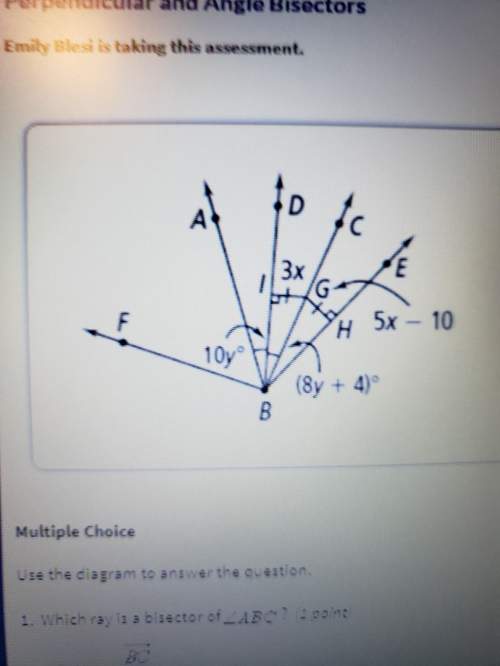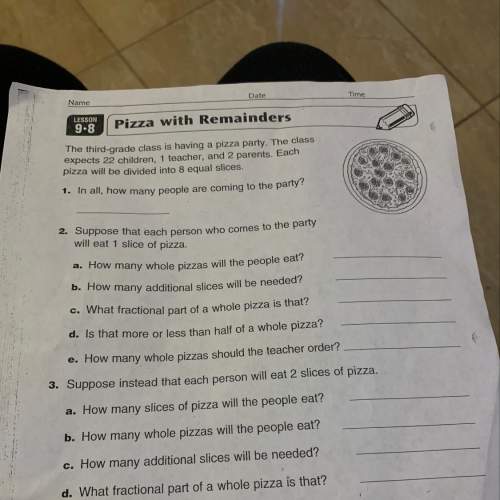
Mathematics, 27.06.2019 11:00, ryantrajean7
Use the diagram to answer the questions 1. which ray is a bisector of abca. bcb. bdc. bad. bf2. what is gha. 5b. 10c. 15d. 253. what is the value of ya. 2b. 4c. 16d. 20


Answers: 1
Other questions on the subject: Mathematics

Mathematics, 21.06.2019 17:30, nayellisoto15
Lance lived in portugal and brazil for a total of 14 months to learn portuguese. he learned an average of 130 new words per month when he lived in portugal, and an average of 150 new words per month when he lived in brazil. in total he learned 1920 new words. write a system of equations to represent the situation. use x to represent portugal, and y to represent brazil
Answers: 1

Mathematics, 21.06.2019 20:20, leximae2186
Consider the following estimates from the early 2010s of shares of income to each group. country poorest 40% next 30% richest 30% bolivia 10 25 65 chile 10 20 70 uruguay 20 30 50 1.) using the 4-point curved line drawing tool, plot the lorenz curve for bolivia. properly label your curve. 2.) using the 4-point curved line drawing tool, plot the lorenz curve for uruguay. properly label your curve.
Answers: 2

Mathematics, 22.06.2019 00:10, nolof
Examine the paragraph proof. which theorem does it offer proof for? prove jnm – nmi according to the given information in the image. jk | hi while jnm and lnk are vertical angles. jnm and lnk are congruent by the vertical angles theorem. because lnk and nmi are corresponding angles, they are congruent according to the corresponding angles theorem. finally, jnm is congruent to nmi by the transitive property of equality alternate interior angles theorem gorresponding angle theorem vertical angle theorem o same side interior angles theorem
Answers: 2

Mathematics, 22.06.2019 04:10, fonzocoronado3478
The probability that a u. s. resident has traveled to canada is 0.18 and to mexico is 0.09. a. if traveling to canada and traveling to mexico are independent events, what is the probability that a randomly-selected person has traveled to both? (page 109 in the book may ) b. it turns out that only 4% of u. s. residents have traveled to both countries. comparing this with your answer to part a, are the events independent? explain why or why not. (page 119 may ) c. using the %’s given, make a venn diagram to display this information. (don’t use your answer to part a.) d. using the conditional probability formula (page 114 in the book) and the %’s given, find the probability that a randomly-selected person has traveled to canada, if we know they have traveled to mexico.
Answers: 3
Do you know the correct answer?
Use the diagram to answer the questions 1. which ray is a bisector of abca. bcb. bdc. bad. bf2. what...
Questions in other subjects:



Law, 26.10.2020 17:30

Business, 26.10.2020 17:30




History, 26.10.2020 17:30








